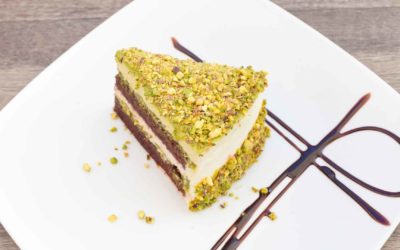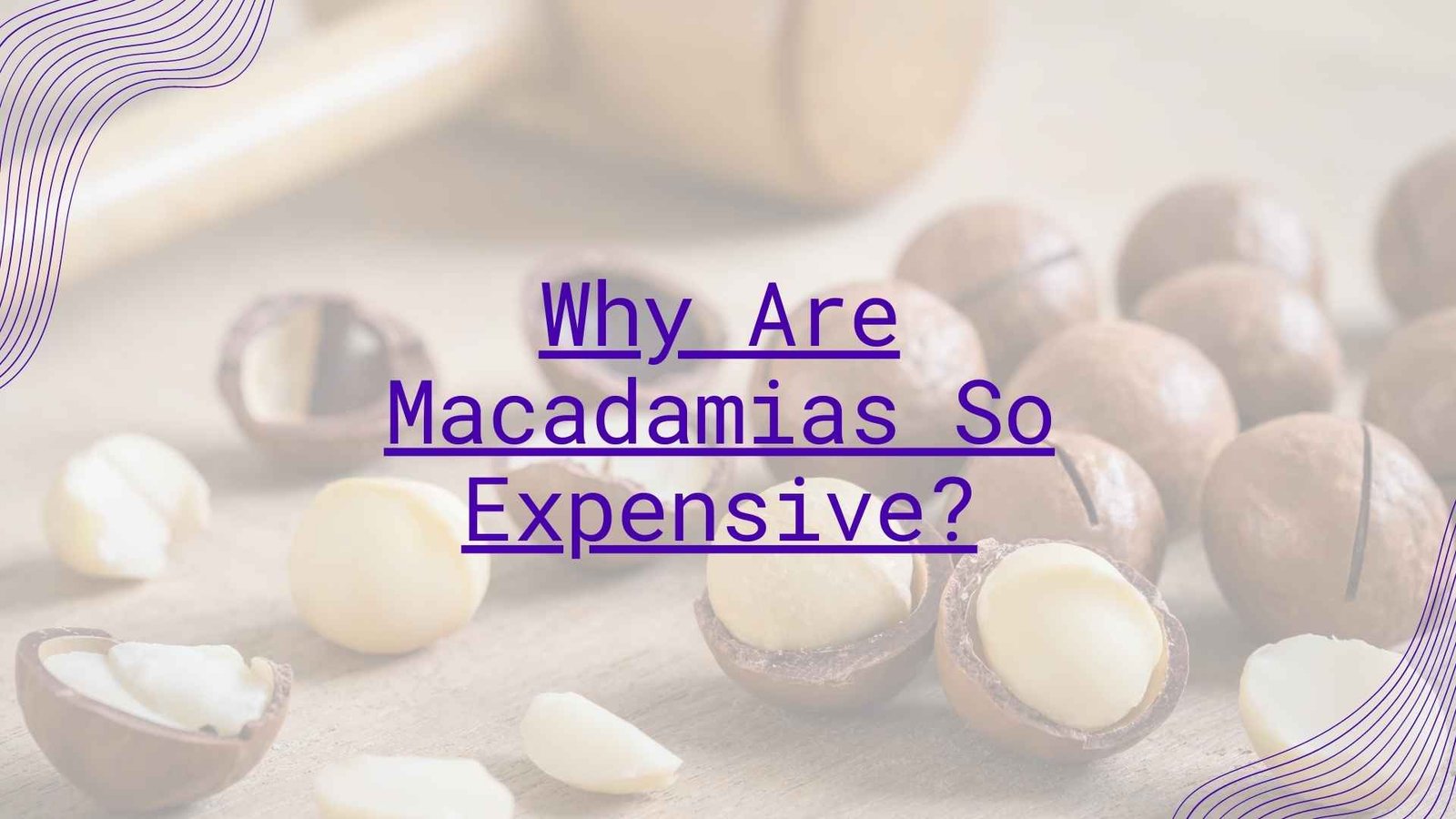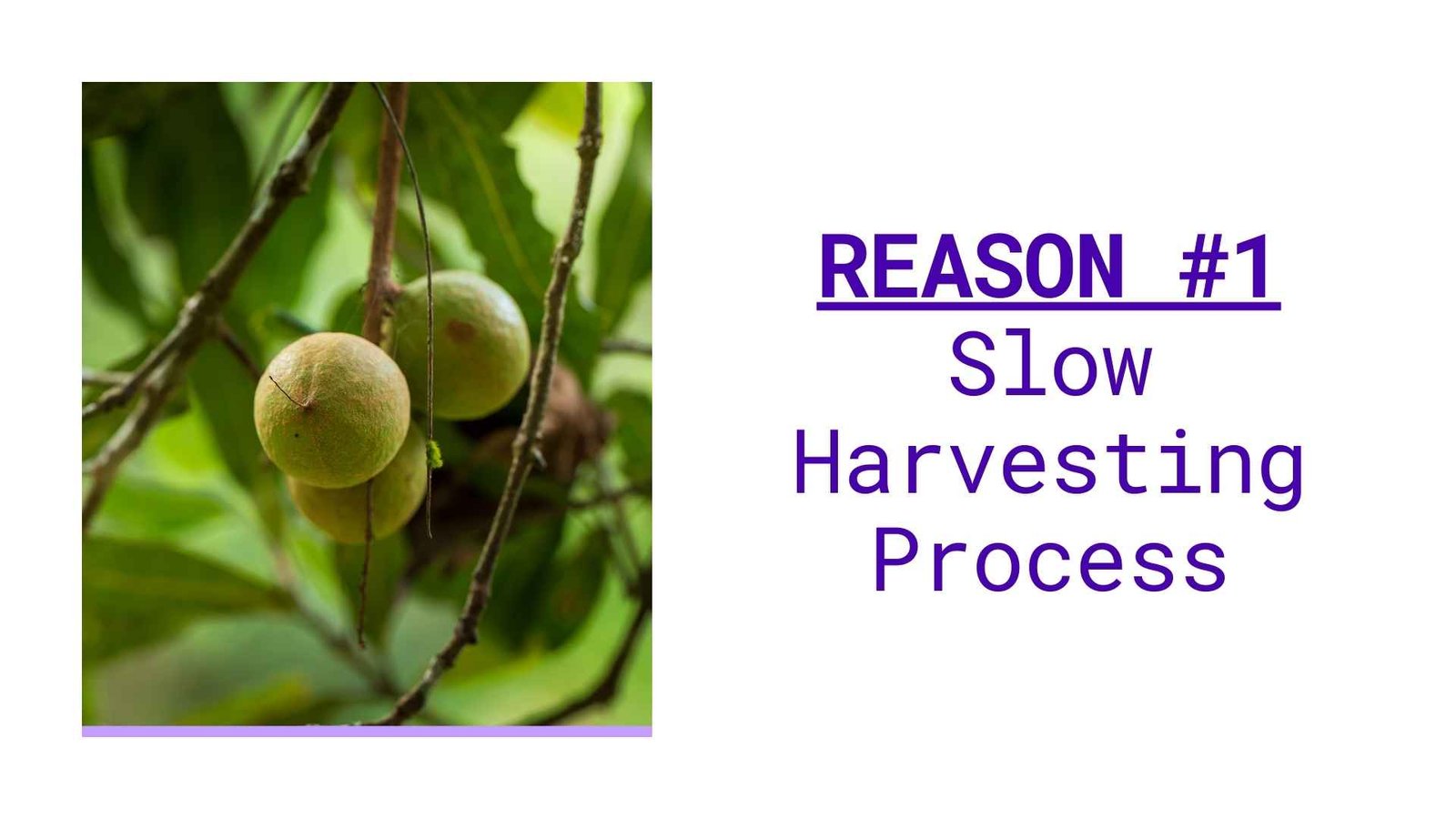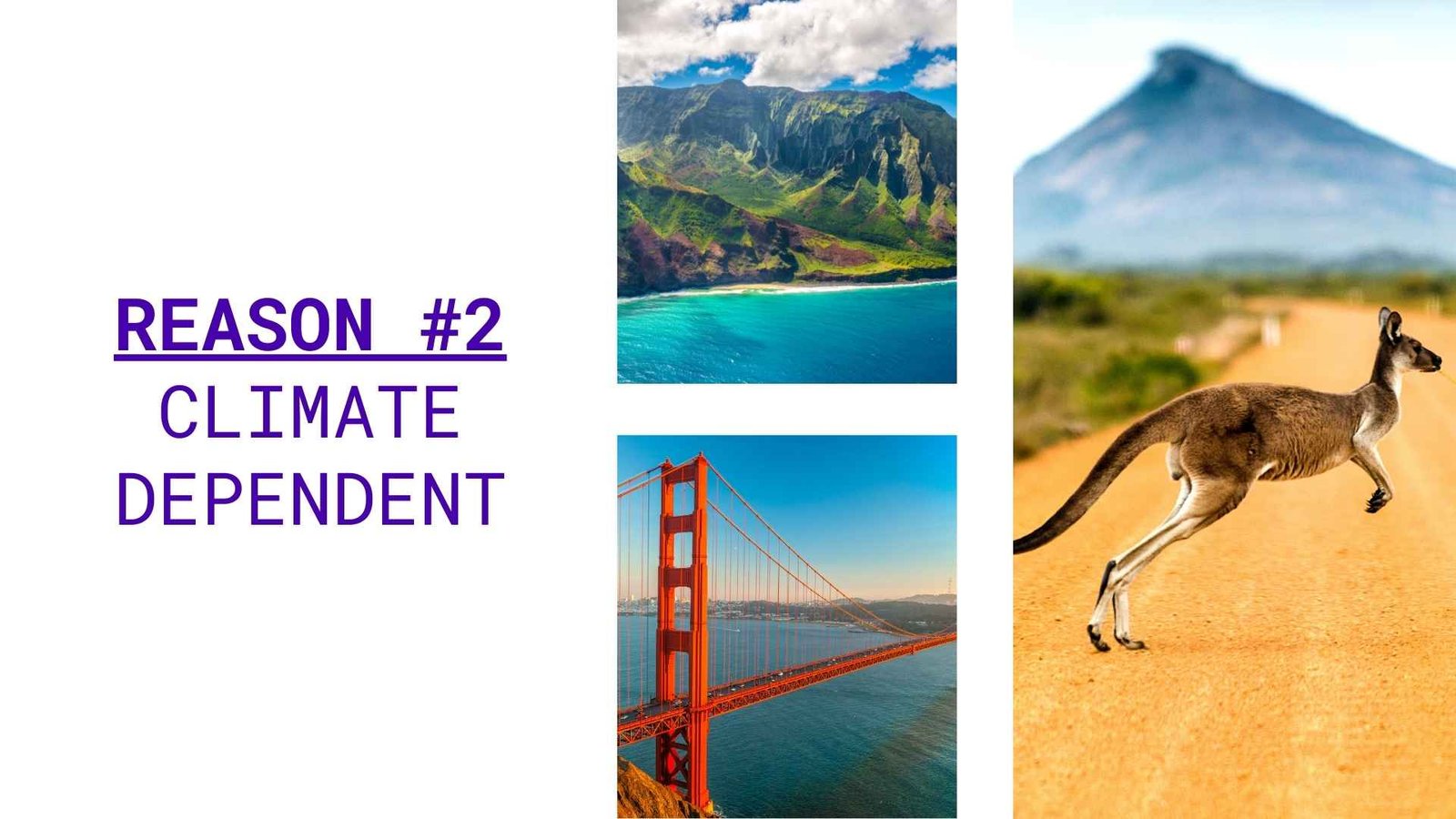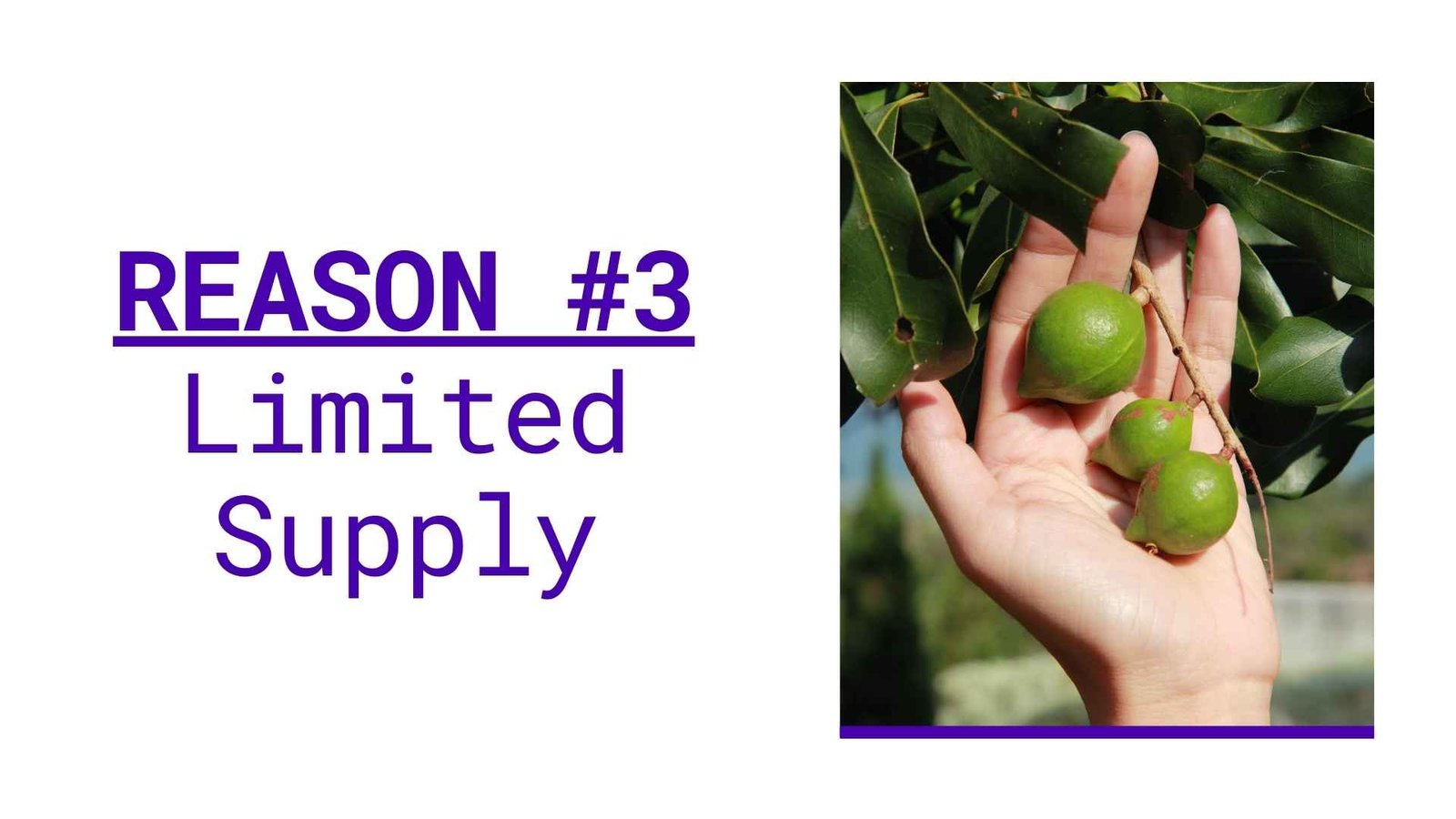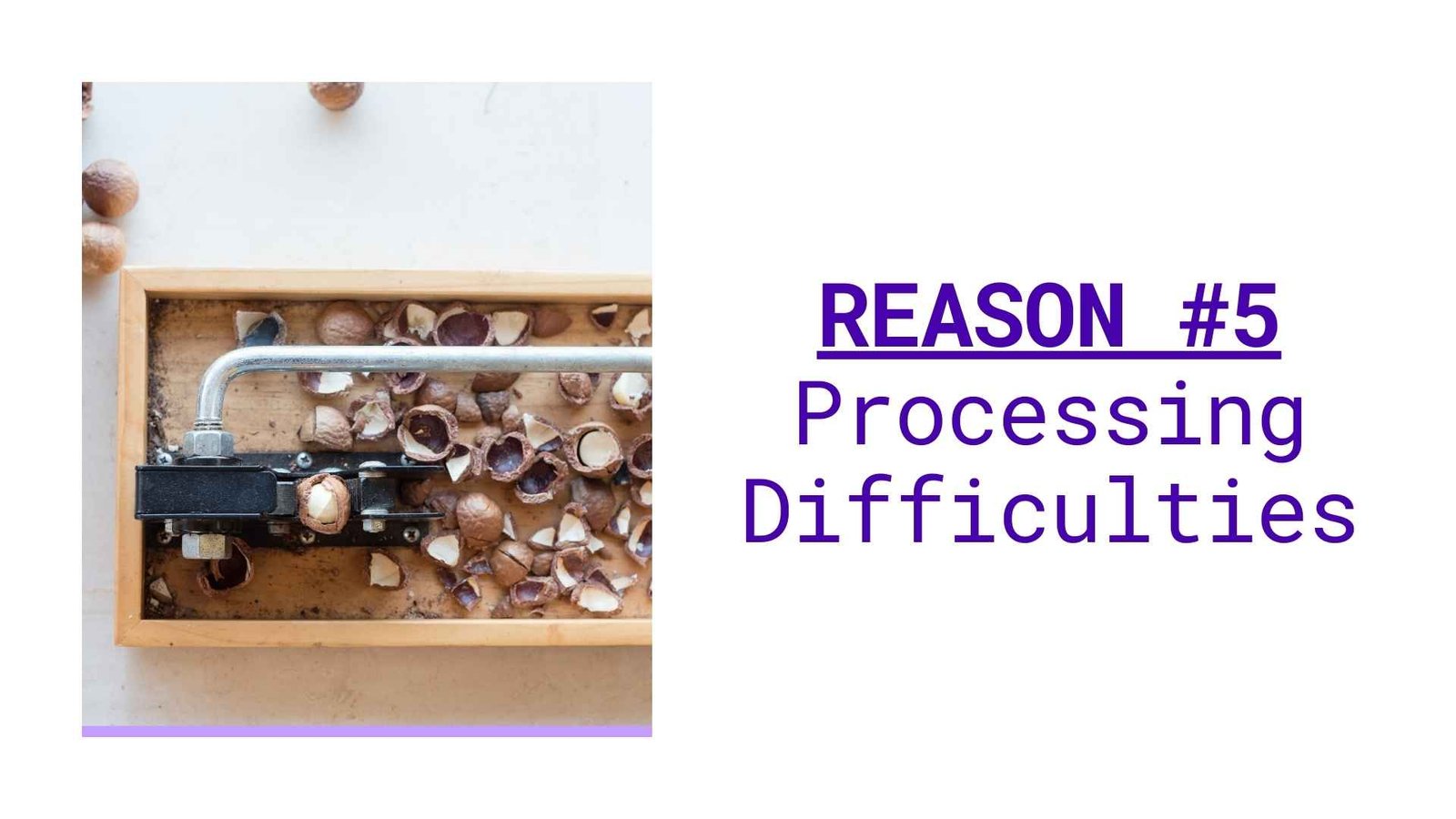Macadamia Are Highly Coveted!
Macadamias are incredibly popular around the world. Macadamia has a buttery, rich flavour, making them a popular choice for cookies, in chocolate spreads, and even in savoury foods. Yet, the heftier price tag for macadamias is not merely the result of its popularity. There is a multitude of reasons why this nut might cost more than its other counterparts. Read on to find out more about this interesting delicacy.
Magnificent Macadamias
Contrary to popular belief, macadamias are not nuts. They are actually seeds! Interesting, we know. Macadamia trees also flourish in warmer climates, in areas with high humidity and rainfall. Macadamia trees are indigenous to Australia, but farmers have found success growing these trees in areas such as Hawaii, Florida, and parts of Australia. Macadamia nuts are also beneficial for your health. They can reduce your risk of heart disease and lower blood pressure, amongst other health benefits. Read more at the link below!
Macadamia Nutrition Information
One ounce (28 grams) offers:
- Calories: 204
- Fat: 23 grams
- Protein: 2 grams
- Carbs: 4 grams
- Sugar: 1 gram
- Fiber: 3 grams
- Manganese: 58% of the Daily Value (DV)
- Thiamine: 22% of the DV
- Copper: 11% of the DV
- Magnesium: 9% of the DV
- Iron: 6% of the DV
- Vitamin B6: 5% of the DV
Why Are Macadamia So Expensive?
Reason #1 Slow Harvesting Process
Macadamia trees are incredibly fussy plants. While there are 10 species of macadamia trees, only 2 produce the pricey nuts that we have come to love. After a tree begins to grow, it takes about 7 to 10 years before it begins to have flowers and bear fruit reliably. To reach the point in which a macadamia tree can produce nuts consistently, farmers have to pay a great deal of attention and care to allow it to flourish. What a laborious process!
Reason #2 Climate Dependent
While other nuts such as peanuts and almonds can grow in a variety of different climates, macadamia nuts can only grow in tropical climates with warmer temperatures and rainfall. This is to ensure that macadamia trees produce a sufficiently large yield. They also cannot tolerate any cold temperatures or the tree may not yield any nuts. The limited range of conditions in which macadamia trees can grow makes it difficult to ramp up production.
Reason #3 Limited Supply
Macadamias are incredibly popular, but the demand for them far outpaces production. The demand for macadamia nuts is growing at an incredible rate of +8% yearly! Of all the nuts grown worldwide, macadamia nuts only make up only 1% of that production, making them extremely rare in their supply. The trees are also threatened by pests. Invasive pests such as the macadamia felted coccid can continue to affect an orchard’s health and production rate.
Reason #4 Expensive Land
Macadamias are only able to thrive in warmer climates, in places such as Hawaii, Australia, and California. However, these places are also a hit with people, given their warmer climate. This makes land highly valuable. Farmers looking to grow macadamia trees must compete for land with tourists and real estate conglomerates. This makes it hard for macadamia tree farmers to expand production.
Furthermore, such land is also very valuable for all sorts of agriculture. Macadamias must compete with other crops such as avocados, tropical fruit, and coffee, all of which also require warmer climates to grow. As such, land available to grow macadamias is incredibly limited as well.
Reason #5 Processing Difficulties
The shelling process for macadamias is another contributor to the high price of macadamia nuts. In order to shell macadamia at a volume suitable for industrial production, one must invest in specialized equipment. This high entry point already proves to be a big challenge for small to mid-scale farmers. Furthermore, shelling damage to the nuts can occur. Given the tough exterior of the fruit, the macadamia inside can be easily damaged in the process. Whole macadamia nuts make up less than 50% of shelled macadamia kernels, the rest being halves or pieces that got damaged in the shelling process.
Conclusion
We hope that this article has allowed you to appreciate the difficult, time-consuming, and labour-intensive process of growing and producing macadamias. Interested to try some of this nutritious food? Click the link down below!

